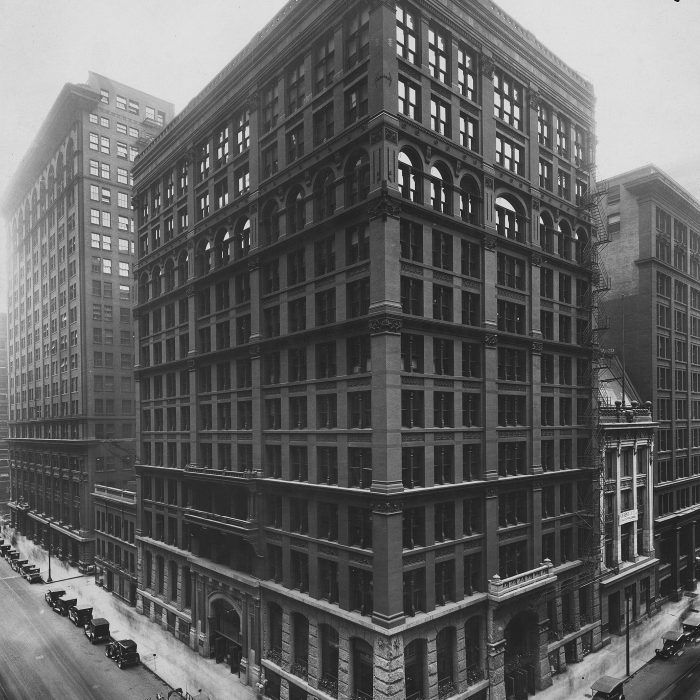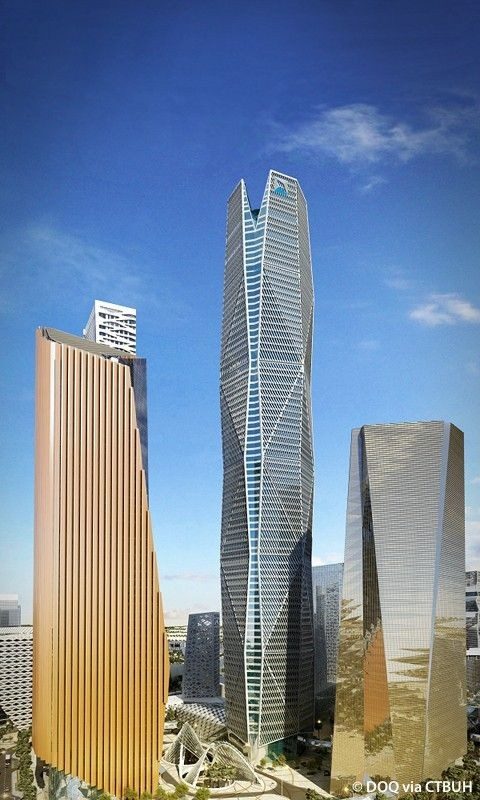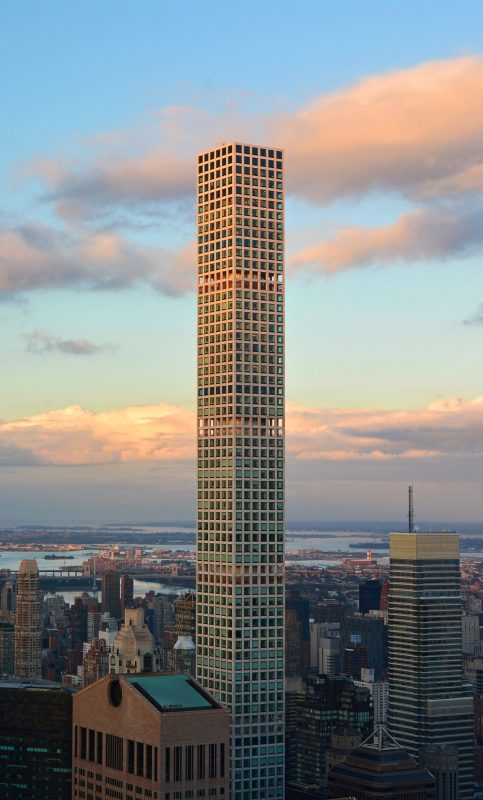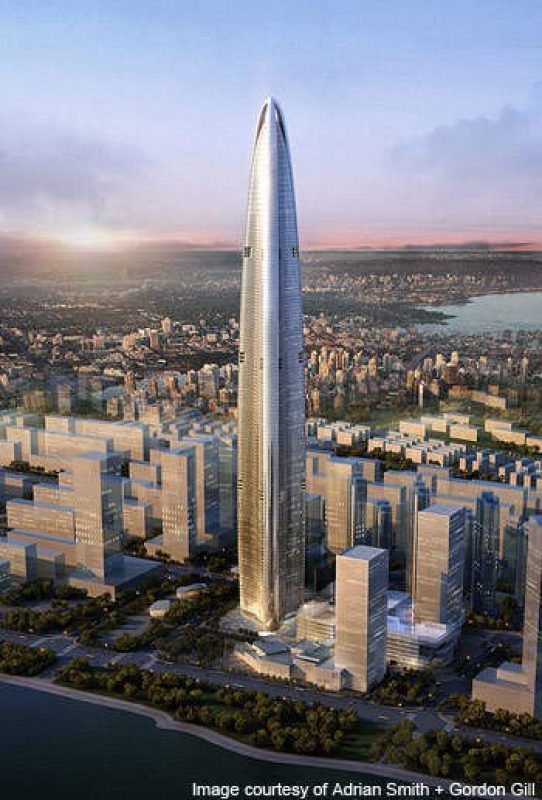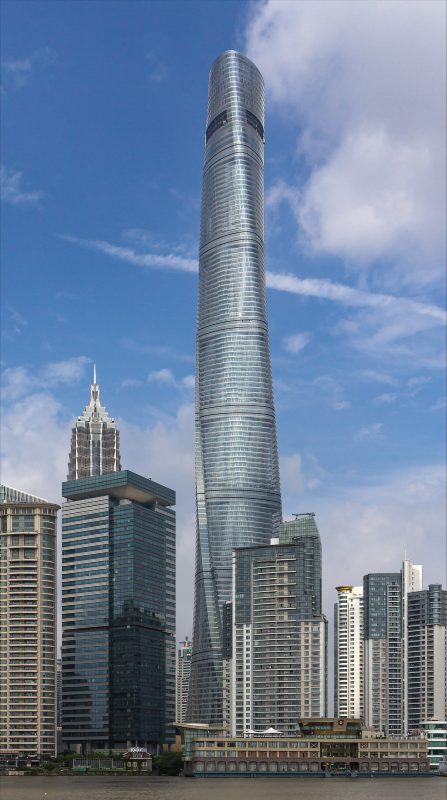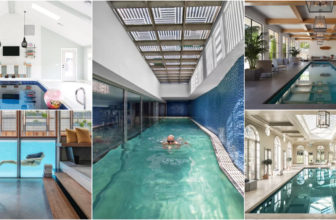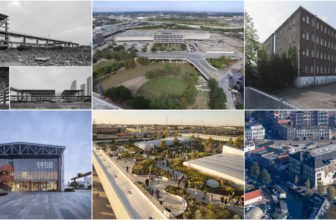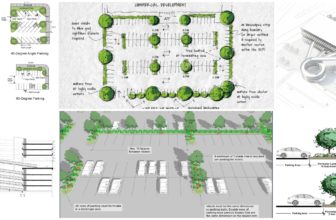Early skyscrapers were a range of tall, commercial buildings built between 1884 and 1939, predominantly in the American cities of New York and Chicago. Those skyscrapers emerged in the US as a result of economic growth, the financial organization of American businesses, and the intensive use of land. New York was one of the centers of early skyscraper construction, and had a history as a key seaport located on the small island of Manhattan, on the east coast of the US. Skyscraper development paused during the years of the Second World War. Once development began again in the 1950s and 1960s, the skyscraper entered a different phase of development, usually called the international or modern period.
Skyscrapers were also built in other developed countries, although reaching nowhere near the level of construction seen in the US. This was partially due to a lack of funding but also because of local architectural preferences. European cities including London and Paris had laws to ban tall buildings, but elsewhere skyscrapers began to appear including Toronto’s Imperial Bank of Commerce Building, Antwerp’s Boerentoren or Buenos Aires’ Kavanagh Building. Many other European skyscrapers were proposed in a frenzy of excited planning, although few materialized. Soviet Russia began the construction of the 1,365-foot (416 m) Palace of the Soviets in the late 1930s, in the Socialist Classicism style, which would have become the tallest building in the world, but war intervened and the skyscraper was never completed. In the post-war years, this style would result in the monumental Seven Sisters of Moscow building.
However, skyscrapers of today are one step beyond, they are capable of both allowing to the increasing density in urban environments and being dominant architectural monuments along city skylines.
The height of New York City’s One World Trade Center is impressive, yet we found that in the last 15 years almost all of the tallest buildings constructed were built in the Middle East or East Asia, especially Dubai and Shanghai. The graphic above shows Burj Khalifa towers compared to its nearest rivals around the world. Clearly, it is 320 metres taller than its predecessor Taipei 101 in Taiwan, as it is now officially the world’s tallest building. Burj Khalifa is more than twice as high as some of the highest skyscrapers built in recent years. Below, we will discuss some of these buildings in more details.
The Tallest Skyscrapers in The World:
5. Capital Market Authority Tower in Riyadh, Saudi Arabia
The Capital Market Authority Tower is the tallest of five structures that make up the plaza situated in the heart of King Abdullah Financial District, and as such is intended to be the iconic centerpiece of a new era of global financial leadership within Saudi Arabia’s capital city. The tower will occupy the top floors of the 79-storey office tower. The building aims to achieve a Gold LEED standard as it combines architectural excellence and environmental protection. The building facade incorporates a high-performance solar control system to moderate the intense Saudi light and heat.
Architect: HOK + Omrania & Associates
Height: 1,437 feet (438 meters)
Global ranking upon completion: 34th tallest
Size: 1.98 million sq. ft. / 184,000 sq.m.
Floors: 76 beyond the ground – 4 under the ground
Elevators: 40
Building function: Corporate Offices
More functions: parking – dining facilities – two-story auditorium.
Energy provision: Photovoltaic array installation on the tower’s roof.
4. 432 Park Avenue in New York
432 Park Avenue will be the tallest residential tower in the United States, and maybe in the western hemisphere, and the tallest residential building in the world, offering new luxury condos in the sky. The cheapest apartments in the new development are selling for $16.5m – virtually guaranteeing a clientele of billionaires. The tower is designed by Rafael Viñoly around what is described as “the purest geometric form: the square” and inspired by a trash can, the tower is designed to have eighty-four 3,969-square-foot (368.7 m2) stories.
Height: 1396feet (426meters)
Global ranking upon completion: 22nd tallest
USA ranking: 3rd tallest
Design architect: Rafael Vonoly Architects
Executive architect: SLCE Architects
Floors: 89
Building function: Luxury Residential
More functions: private swimming pool – library – cinema screening room.
3. Marina 101 in Dubai
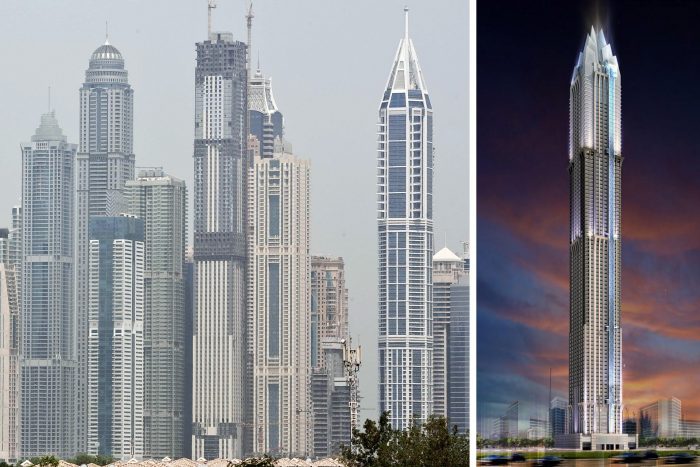
View of the Dubai Marina in May, 2013. The 101-storey Marina 101 tower is in the center. Antonie Robertson / The National
Marina 101 is a 101 storey, 432 m (1,417 ft) tall skyscraper in Dubai, which is planned to be the second-tallest building in Dubai, with a height of 426.5 metres. The tower will house the Middle East’s first Hard Rock hotel with 281 rooms, while the upper levels will accommodate 420 one and two bedroom apartments and a restaurant with panoramic views of the city.
Height: 1399 feet (426.5 meters)
Global ranking upon completion: 21st tallest
Dubai ranking: Second tallest
Architect: National Engineering Bureau
Floors: 101
Elevators: 29
Building Function: Hotel + Luxury Residential
Further Function: Restaurants and club with panoramic view of the city in upper levels.
2. Wuhan Greenland tower in Wuhan, China
Wuhan Greenland tower is a 119-level tower in Wuhan, China. The tower will be comprised of about 300,000 square meters of floor area, including about 200,000 sm of offices, 50,000 sm of luxury apartments and condominiums, a 45,000 sm five-star hotel, and a 5,000 sm, 27-meter-tall private club with spectacular views at the tower’s penthouse level. The tower features a uniquely streamlined form that combines three key shaping concepts: a tapered body, softly rounded corners and a domed top, to reduce wind resistance and vortex action that builds up around supertall towers. The building’s extremely efficient aerodynamic performance will allow it to minimize the amount of structural material (and the associated embodied carbon) needed for construction.
Height: 567 m (1,860 ft)
Global ranking upon completion: 19th tallest
Central China: Second tallest
Architect: Adrian Smith + Gordon Gill Architects in conjunction with Thornton Tomasetti Engineers
Floors: 125-storey
Building function: Hotel, Residential, Office
Updated: The building’s height was increased to 636 m, and the expected completion date is now 2017. Source: Bloomberg
1. Shanghai Tower in Shanghai, China
Shanghai Tower is the most prominent icon of China. The tower’s transparent, spiral form will showcase cutting-edge sustainable strategies and public spaces that set new standards for green community. Within 121 stories, Shanghai Tower has already topped out at a height of 632 metres, surpassed only by the 828-metre Burj Khalifa in Dubai. The Tower will house Class-A office space, entertainment venues, retail, a conference center, a luxury hotel and cultural amenity spaces. The tower will be registered for a high level of building certification from the China Green Building Committee and the U.S. Green Building Council.
Height: 2,073 feet (632 meters)
Global ranking upon completion: 2nd tallest
Architect: Gensler
Floors: 121 beyond the ground, 2 under the ground
Building Function: Hotel + office
Further Function: parking garage – restaurant – retail
Architectural Style: structural expressionism – futurism
Materials: glass – steel – reinforced concrete


